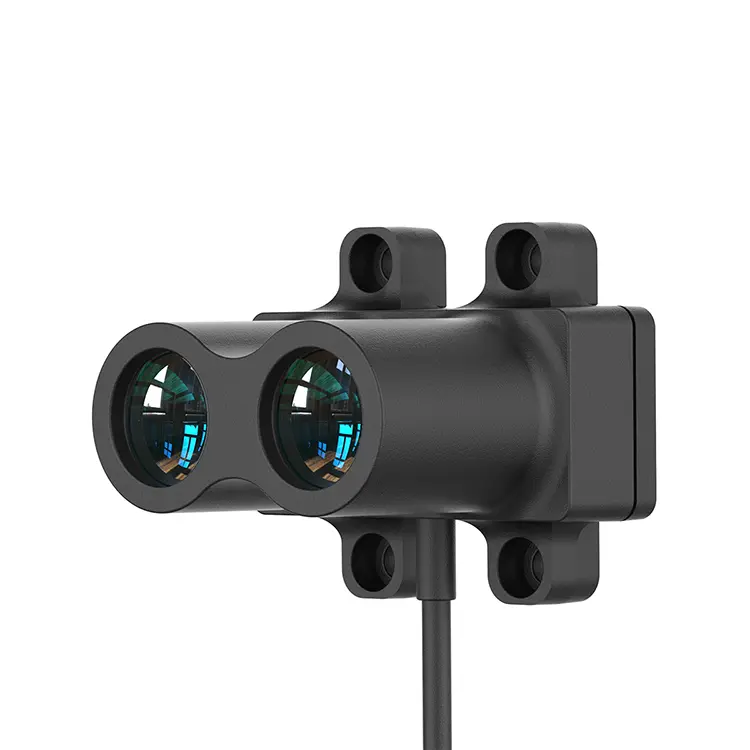TOF Range Lidar calculates the distance of the measured target by directly measuring the time difference between the emission and reception of electromagnetic waves. This technology is widely used in LiDAR and has the characteristics of high precision and strong real-time performance.
The principle of LiDAR imaging can be summarized as: emitting light into a specific field of view (FOV) through a laser transmitter, and using a receiver to capture the information reflected back by these lights within the range. Based on the known and obtained detailed data of the emitted and reflected light, the system can directly calculate or derive various properties of the reflection point, such as speed, distance, height, and reflection intensity.

These data are crucial for subsequent applications because they can provide accurate measurement and positioning for various tasks. At the same time, the working principle of LiDAR also involves a variety of technologies, including dToF (direct measurement of the flight time of light) and iToF (indirect measurement of the flight time of light by measuring phase shift), which together ensure the high precision and efficiency of LiDAR. In addition, LiDAR also relies on a variety of key components, such as pulsed laser diodes (PLDs), avalanche photodiodes (APDs), and single photon avalanche diodes (SPADs), which together constitute the transmitting and receiving systems of LiDAR.
In phase-based laser ranging, in order to solve the contradiction between unambiguous distance and measurement accuracy, there are multiple laser modulation frequencies in the same measurement system. In a single measurement, multiple frequency scales are used to measure the same distance, and then the results are fused to obtain the final distance. The TOF Range Lidar principle is based on the phase-based ranging principle of different frequency modulations.
The light source of the pulse modulation scheme is modulated according to square wave pulses. Each pixel at the receiving end is composed of a photosensitive unit, which can convert incident light into current. The photosensitive unit is connected to multiple high-frequency conversion switches, which will direct the current into different capacitors that can store charge.
The laser light source turns on to emit a light pulse and then turns it off. At the same time, the control unit opens and closes the electronic shutter at the receiving end. The charge received by the receiving end is stored in the photosensitive element. Then, the control unit turns the power on and off for the second time. This time the shutter opens later, at the same time as the light source is turned off. The newly received charge is also stored.
TOF Range Lidar, a radar based on time-of-flight (TOF) technology, is based on the core principle of accurately measuring the time difference between the emission and reception of electromagnetic waves. Through this time difference, the radar can calculate the precise distance of the target object. This technology is not only widely used in laser radar, but also plays an important role in many fields due to its high precision and strong real-time performance.
For more information on our products, please contact Jioptik.